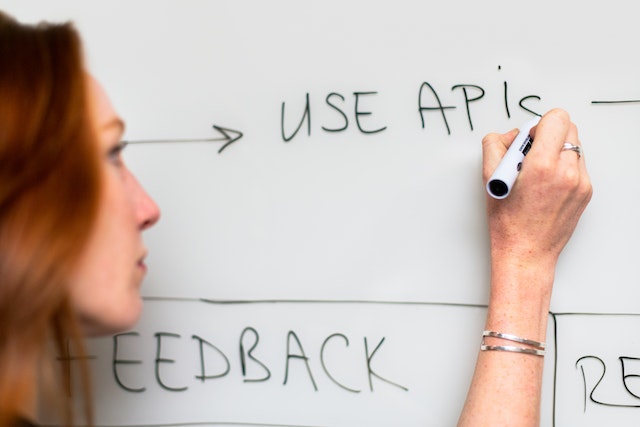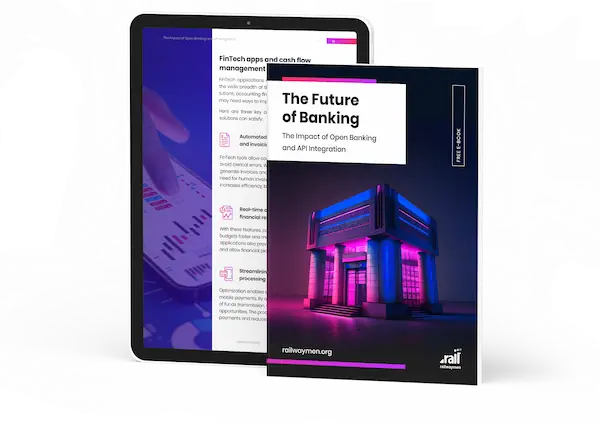Online shopping has dominated all kinds of online payment gateways in recent years. The need for a secure payment gateway for online transactions is directly proportional to the growing number of online purchases. Therefore, quite a few entrepreneurs are making the decision to invest in payment solutions that will secure sensitive customer data. Among the options available on the market today, the use of open banking standards often stands out.Therefore, I decided that this time I will introduce you to the world of open banking. With my help, you will learn what open banking is, what it consists of, and I will tell you about the benefits of using open banking standards to build a secure payment gateway.
Table of Contents:
2. What does the open banking process look like in practice?
3. The benefits of using Open Banking Standards to build a secure payment gateway.
4. What is the process of building a secure payment gateway?
What is open banking?
Before we get to the most important information, it is worth systematizing the knowledge you have about open banking. This is nothing more than the practice of opening up banking data to third-party providers so that they can be given access to create new products and services. Open banking is closely related to the use of application programming interfaces (APIs), which are used to conduct communication with each other.
The role of open banking is to create a transparent and, at the same time competitive banking sector, while ensuring that customers can safely and easily share important financial data with third-party providers. This process consists of the necessary information on the bank account, the history of credit card transactions carried out, as well as any data on loans taken out.

What does the open banking process look like in practice?
The open banking described so far is based on giving third-party providers access to customers' necessary banking data via secure APIs. In order for this to be possible, customers must agree to this step in advance. After receiving the appropriate consent from the customer, the third-party provider can receive the necessary information about the customer's banking data, which will contribute to the development of new products and services.
With the aforementioned customer data, the third-party provider can start working on developing an application that will serve to personalize the offerings while also analyzing the customer's spending habits. Giving access to this kind of data often contributes to third-party providers offering recommendations for loans and credit cards.

The benefits of using Open Banking Standards to build a secure payment gateway
Well, now that you know what open banking is in theory, it's time to take a closer look at its benefits in terms of using Open Banking Standards to build a secure payment gateway. Here are some of the advantages that can be highlighted on this topic.
Enhanced security
Open banking standards contribute to the secure flow of financial data between different systems. Through APIs, all sensitive information is adequately protected, making the risk of fraud far less.
Impact on improving the customer experience
Open banking provides customers with convenient, secure and, most importantly, easy exchange of financial data with third-party providers. As a result, they can enjoy access to personalized products and services that can indirectly translate into their future financial status.
Lower costs
This is another factor in favor of open banking standards. When developing secure payment gateways, APIs and enterprise infrastructure can be used to reduce not only the development time, but more importantly the payment for developing a secure payment gateway.
Impact on competitiveness
Open banking impacts competition in the broader banking industry. Competition for customer data and the ability to represent their interests is causing banks to outdo each other in developing the most favorable offers for consumers and developing even better standards for serving them.
Compliance with current regulations
Open banking standards are developed on the basis of applicable laws in the regions and all kinds of requirements established by dedicated bodies. Examples include the PSD2, CDR, CFPB and other FinTech regulations around the world. Compliance with applicable regulations can help companies avoid fines and penalties.

What is the process of building a secure payment gateway?
The decision to build a secure payment gateway while using open banking standards involves careful consideration of several important factors. Analyzing each of them and drawing appropriate conclusions can translate into making the right decisions throughout the process.
Choose a reliable API provider
Application Programming Interface is a set of rules and protocols whose role is to guarantee the best possible standards of communication. The API provider is responsible for their security, which is especially necessary when requesting access to sensitive financial data. The priority of principals wishing to enter a payment gateway is security and compliance with current regulations. This is why the role of the API provider is so crucial.
There are several leading API providers on the market like Stripe, PayPal and OpenPayd. Each of these solutions has its supporters. However, it is worth paying attention to the reliability and quality of the interface during the final selection. Companies should look for an API provider that has a proven track record of providing secure APIs and has experience working with financial data. Therefore, before deciding on a particular provider and considering price, scope of support and scalability, also analyze its past experience and reviews.

Get customer approval
Before you take any steps related to full customer support, be sure to obtain the necessary permissions to use the customer's financial data. In this case, the secure API I mentioned a moment ago can be useful. Obtaining consent from the customer is a key step in the process of building a secure payment gateway, as it ensures that customers are aware of the data being collected and how it will be used.
In addition to seeking the necessary consents, companies should also ensure that they comply with the necessary regulations, such as the General Data Protection Regulation (GDPR) in effect within the European Union. It is responsible for setting standards for the collection, use and storage of personal data.
Secure data transmission
Any financial data distributed between systems should be encrypted beforehand to guarantee protection against theft or interception by the wrong people. Encryption is, in other words, the process of encrypting data so that only previously authorized parties have access to it. Companies should ensure that they use strong encryption methods, such as Transport Layer Security (TLS), to secure their payment gateway.
In addition to encryption, it is equally important to provide other security measures in the form of firewalls, intrusion detection systems and access control. All this is done to secure the emerging payment gateway from unauthorized access.
Implement security controls
Companies should implement security controls to ensure that their payment gateway is protected. These controls include multi-factor authentication, intrusion detection and data encryption. Additionally, multi-factor authentication, which requires users to provide two or more forms of identification, is proving useful. You're probably familiar with this method from social networking sites, where a security token or biometrics, for example, can be used in addition to a password to log in.
In addition, the intrusion detection systems keep track of the payment gateway to prevent any unwanted activity related to unauthorized access. The systems I have outlined can also detect and prevent SQL injection attacks, cross-site scripting and buffer overflow attacks. Data encryption is the process of encoding data so that it can only be read by authorized parties. You should use strong encryption methods such as AES (Advanced Encryption Standard) to protect sensitive financial data.

Testing and monitoring
The last recommendation is to regularly test and monitor the developed payment gateway. All this is done to guarantee users a consistent level of security and, at the same time, compliance with current regulations. To this end, it is necessary to conduct regular security audits, vulnerability assessments and penetration tests. Regular monitoring of the payment gateway will help to identify all kinds of potential violations and respond quickly to potential threats.
Summary
Using open banking standards to build a secure payment gateway is an efficient method to safeguard consumers' private financial data. You may create a payment gateway that conforms with pertinent rules, and provides top-notch customer service by utilizing secure APIs and putting in place strong security controls. Companies that implement open banking standards will be well-positioned to compete in the contemporary digital economy, given the development of online transactions and the rising demand for secure payment gateways.
Learn more about upcoming Open Banking trends from Railwaymen e-book
And if you are interested in the topic of open banking and would like to expand your knowledge with new information, I highly recommend our latest e-book "The Future of Banking: The Impact of Open Banking and API Integration". It's a solid dose of expert knowledge backed by real-life project examples and statements from people actively involved in the industry.
It's time to explore the future of banking
Are you interested in the future of banking and how it will affect your business? Our e-book "The Future of Banking: The Impact of Open Banking and API Integration" provides a detailed analysis of these changes. With thought-provoking insights and expert analysis, you will be able to prepare for the challenges and opportunities ahead.
DOWNLOAD NOW


%20(1).jpg)



